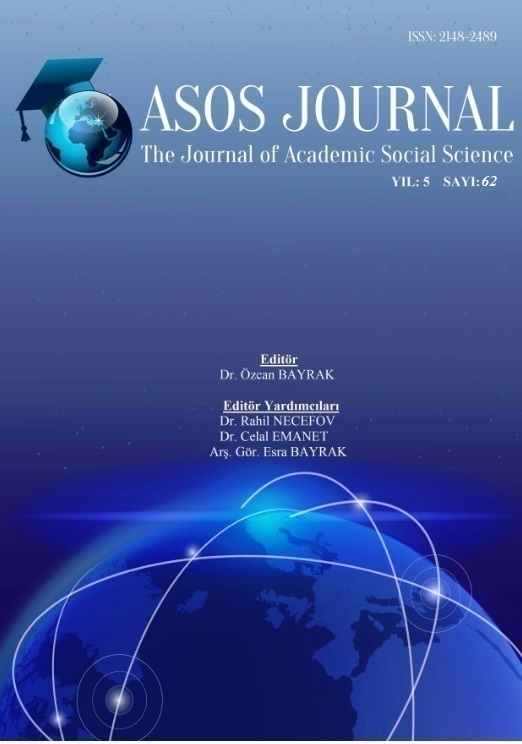Author :
Abstract
Bu çalışmanın amacı ortaokul öğrencilerinin atık nesnelerin kullanımına yönelik görüşlerini ortaya çıkarmaktır. Ölçme aracı olarak Atık Nesnelere Yönelik Görüş Ölçeği (Sağlam ve Yurdabakan, 2016) kullanılmıştır. 24 soru ve üç alt boyuttan oluşan bu ölçek, beşli likert tipi bir ölçektir. Alfa güvenilirlik katsayısı alt boyutlar için 0.75 ile 0.82 arasında değişmektedir. Çalışma, 2016 yılında, İzmir ilinde bulunan bir ortaokulda öğrenim gören 5. 6. 7. 8. Sınıf öğrencileri üzerinde gerçekleştirilmiştir. Çalışma grubunu 242 (%51) kız, 229 (%49) erkek olmak üzere toplamda 471 ortaokul öğrencisi oluşturmaktadır. Analizler SPSS paket programı kullanılarak yapılmıştır. Aritmetik ortalama, standart sapma gibi betimsel istatistikler hesaplanmıştır. Ele alınan değişkenlere göre veriler t testi ve tek yönlü varyans analizi (ANOVA) kullanılarak analiz edilmiştir. Elde edilen bulgulara göre ortaokul öğrencilerinin atık nesnelere yönelik görüşlerinin cinsiyetlere göre anlamlı bir farklılık gösterdiği ve sınıflara göre ise ölçeğin yarar alt boyutunda anlamlı bir farklılık gösterdiği görülmüştür.
Keywords
Abstract
The aim of this study is to explore the opinions of middle school students related to the use of waste objects. In order to define students’ attitudes to AN, Waste Objects Opinion Scale (Sağlam, Yurdabakan, 2016) was used. This scale, consisting of 24 attitude items and three sub-dimensions, is a five-point Likert type scale. The alpha reliability coefficient for the subscales ranges from 0.75 to 0.82. This study was realized in the spring semester of 2016 year with the participation of 5th, 6th, 7th and 8th grade students from one middle school in Izmir. Working group of the study is consisted of 471 middle school students who are 242 (51%) female and 229 (49%) male. Analyzes were made by using SPSS 24 packet program. Descriptive statistics such as arithmetic mean, standard deviation was calculated. According to investigated variables, The Data were analyzed by using t test and one-way analysis of variance (ANOVA). According to the findings of the study, it was seen that the opinions of middle school students showed a meaningful difference according to the genders. Additionally, the present study showed us a significant difference in the benefit subscale of the scale by the classes.





